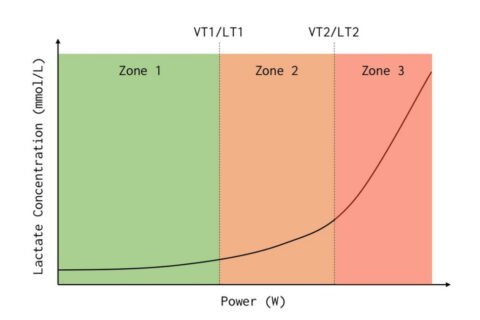
Dr. Seiler: Short Interval Stacks, Part 1
Interval training sessions with repeats of 30:30s, 40:20s, and 30:15s have become very popular. How does the (endurance-trained) body respond to this type of high-intensity interval prescription?

Interval training sessions with repeats of 30:30s, 40:20s, and 30:15s have become very popular. How does the (endurance-trained) body respond to this type of high-intensity interval prescription?

Dr. Stephen Seiler explains the endurance training zones schemes he uses in research (3 zones) and in practice working with Norwegian coaches and athletes (5 zones) as part of the Norwegian Olympic Federation model.

To avoid the high-intensity effort required to directly measure max heart rate, athletes use prediction equations. Clint Eastwood may or may not approve.

Like it or not, we slow down as we age. Do some parts of our physiological machinery slow down faster than others? If so, what does that mean for training and endurance performance?

At what intensity should athletes perform long, slow distance workouts? Dr. Stephen Seiler lays out a method for athletes to figure out their own, ideal intensity and duration for low-intensity workouts.

Endurance athletes at all levels are adjusting to a new reality. Dr. Stephen Seiler shares some thoughts on ways athletes can adjust and make the most of a difficult situation.

There are four balances to strike when training indoors: 1) bone health, 2) muscular balance, 3) intensity and duration balance in our training sessions and 4) energy balance

In this Tedx talk, exercise physiologist Dr. Stephen Seiler explains in words and pictures how modern exercise physiology laboratories reveal the body’s remarkable capacity for adaptation.

Dr. Stephen Seiler presents the case for why properly measured heart rate data is important to track and about some dos and don’ts to follow when attempting to determine your own HRmax.

Here is a lap-by-lap performance analysis of one rider who made it almost to the very end at the 2020 UCI Road World Championships in Imola, Italy.

Correct marathon pacing can be the difference between fond memory and nightmare in the marathon. So what does good pacing look like?

Dr. Stephen Seiler discusses the distinction between overtraining, overreaching, and burnout.

In this episode we have a classic Coach Connor special. We ask a question not many other physiologists are asking: Is an amateur’s zone 2 ride (in a five-zone model) as physiologically taxing as a pro’s zone 2 ride?

We bring in Dr. Stephen Seiler, one of the world’s preeminent exercise physiologists, to discuss how to adjust your training now that the world is in a chronic state of disruption.

In this episode we look at the big picture when it comes to training in zones, or ranges, versus training a target number. Because what number is best?

In this episode we learn about the inception of the polarized method, and we discuss Dr. Seiler’s current research on the all-important aerobic threshold.

Complex training prescriptions are becoming increasingly popular. Does it really need to be that complex? What do you gain from this complexity?

We discussed the overall polarized approach in episodes 54 and 51. Today, we’re going to talk about the other side: high intensity work.